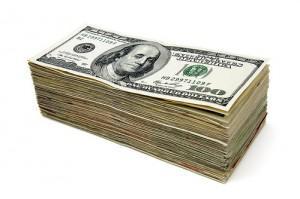 Although the United States economy generates something on the order of 15 trillion dollars in GDP, several figures in terms of expenditures have become particularly worrisome.
Although the United States economy generates something on the order of 15 trillion dollars in GDP, several figures in terms of expenditures have become particularly worrisome.
A Five Friday Facts from a few months ago contained the following figure: $202 billion is spent annually on home heating and cooling bills in the United States. In addition, NPR reported that the US military has spent $20.2 billion on air conditioning in Iraq and Afghanistan. Coupled with the figure from the United States Green Building Council that puts the electric and gas bills for schools somewhere in the neighborhood of $8 billion annually and the astonishing amount of money, while small relative to national GDP, remains a significant outlay of capital.
What if we could reduce the energy consumption by 25%? This would have a sizable impact on the overall economy. Whether it leads to increased hiring through returning new found savings, greater investment in infrastructure, or just fed back into the company, 25% of the aforementioned figures would yield roughly $57 billion. This may be only a sliver of the reductions discussed in the recent debt ceiling talks, but it represents a shift in the way we spend money. Efficiency, from a physics perspective, is calculated by dividing the output (or useful work done), by the input (or total work done). While 100% efficiency is not technically possible, it is the goal. Looking at various energy sources, generating electricity from coal is one of the least efficient transformations with something on the order of 33% efficiency. In other words, two-thirds of the energy in coal is lost to the atmosphere as heat during electricity generation.
There are two issues here, one making our buildings more efficient so they use less energy to achieve the desired goal and two, choosing the most efficient energy source. The primary concern of this post is increased efficiency in order to reduce overall spending. Monetary savings from energy efficient designs, products, and behaviors can lead to big savings. In this era of fiscal responsibility, energy efficiency just makes cents.
[Image source]

